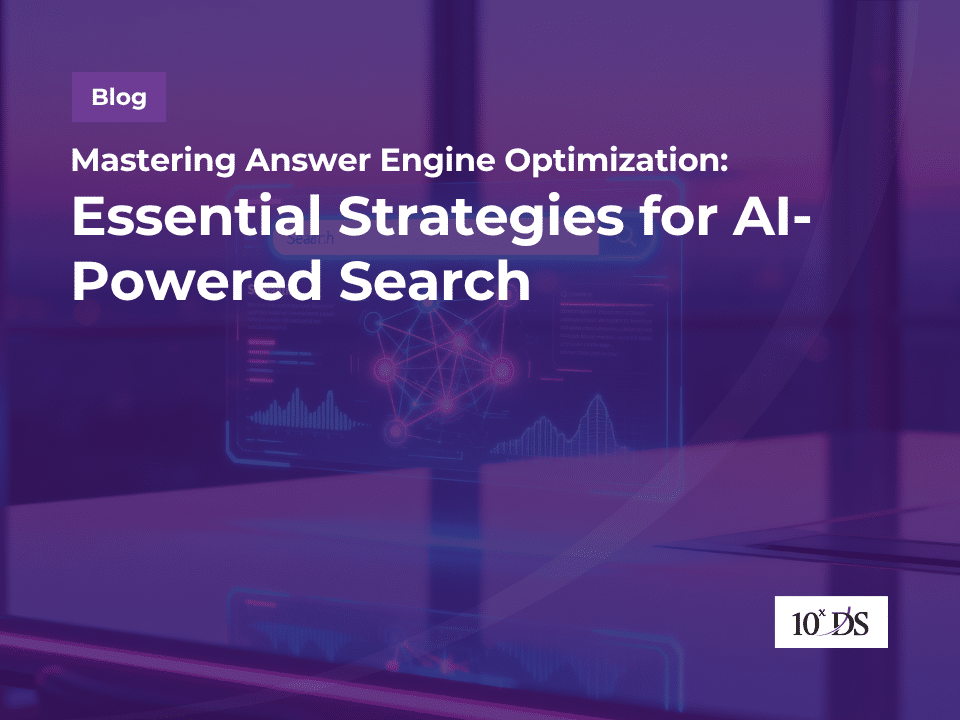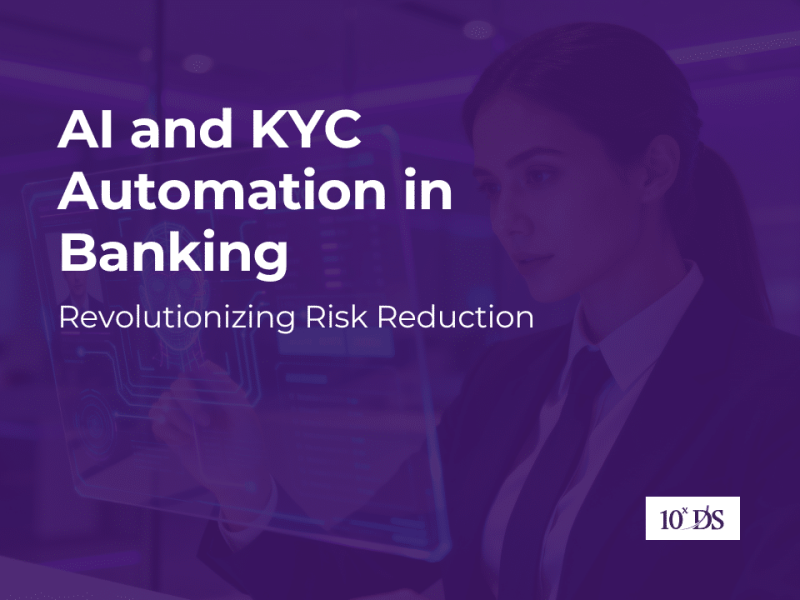
Mastering Answer Engine Optimization: Essential Strategies for AI-Powered Search
The digital landscape is undergoing a profound transformation. Traditional Search Engine Optimization (SEO), focused on ranking web pages through keywords and backlinks, is evolving to meet the demands of a new era. We are now in the age of Answer Engine Optimization (AEO), where the goal is no longer just to appear in search results, but to be the definitive answer. This shift is driven by the rise of Artificial Intelligence (AI), machine learning, and Natural Language Processing (NLP), fundamentally changing how users seek and receive information online. For marketers, understanding and implementing effective AEO strategies is no longer optional; it’s a critical component for sustained digital visibility and brand authority.
In this blog, we’ll explore the rising importance of Answer Engine Optimization (AEO)—a strategic approach to ensure your content stands out in a world where search is no longer just about links, but about direct, intelligent answers.As digital experiences evolve, users increasingly expect instant, accurate, and conversational responses to their queries. This shift demands a new kind of visibility—one where your content isn’t just discoverable, but selectable by intelligent systems trained to deliver the best possible answer.
Understanding What is AEO: The New Frontier of Digital Visibility
Answer Engine Optimization (AEO) represents a strategic approach to content creation and structuring, designed to make your information easily discoverable, understandable, and citable by AI-powered systems. Unlike conventional SEO, which primarily aims to improve organic rankings and drive clicks to your website, AEO centers on positioning your content as the direct, authoritative response to user queries, whether presented as a featured snippet, a voice assistant’s reply, or an AI chatbot’s summary. The essence of AEO lies in enabling search platforms to provide immediate answers, effectively turning your content into the solution itself, rather than merely a gateway to it. According to a 2025 Acquia survey conducted by Researchscape, 70% of marketers believe Answer Engine Optimization (AEO) will significantly shape their organization’s digital strategy within the next one to three years.
The distinction between AEO and traditional SEO, while significant, highlights their complementary nature. While SEO focuses on broader keyword targeting and website traffic, AEO prioritizes precise, direct answers and brand citation within AI responses. Traditional SEO tracks metrics like impressions, clicks, and conversion rates, whereas AEO measures success through citation rates, share of voice in AI results, and brand mentions even without a direct website visit. This doesn’t mean SEO is obsolete; rather, a robust SEO foundation – covering technical aspects, content quality, and domain authority – serves as a prerequisite for successful AEO optimization. AI systems still crawl and index the web, and poor technical health or weak authority can hinder your content from being discovered and cited.
Effective AEO Strategies for Maximizing Digital Presence
Implementing a successful AEO optimization framework requires a multi-faceted approach, integrating content, technical, and off-site elements. Here are key AEO strategies to consider:
1. Prioritizing User Intent and Question-Based Content
The foundation of effective AEO lies in deeply understanding your audience’s questions and search intent. This involves researching the precise queries your target users are asking at every stage of their journey. Utilize tools like Google’s “People Also Ask” sections, Answer the Public, or keyword research platforms to identify common questions. Segment these questions by user intent (informational, navigational, transactional) to align your content strategy. For example, top-of-funnel content should address broad informational queries, while bottom-of-funnel content can focus on specific purchase-related questions. Companies that established dedicated AEO strategies early on have reported capturing significantly more answer engine traffic compared to competitors who delayed.
2. Structuring Content for Direct Answers and AI Extraction
The format of your content is paramount for AEO. AI systems don’t read articles linearly; they seek out clear, modular blocks of information. Begin every key section with a concise, direct answer (ideally 40-60 words) to the question posed, much like optimizing for a featured snippet. Use clear headings (H2s, H3s) that explicitly state the question, followed immediately by the answer. Employ scannable formatting such as bullet points, numbered lists, and tables to break down complex information into digestible chunks. Incorporate dedicated FAQ sections to address common questions related to your topic. The aim is to make your content undeniably clear, verifiable, and easy for AI to extract and summarize.
3. Technical Implementation and Schema Markup
Technical SEO remains foundational, but with an amplified focus on structured data for AEO. Ensure your website is easily crawlable, mobile-friendly, and offers fast loading speeds. While it’s unclear if all AI platforms currently use schema, traditional search engines have for years, and it aids in converting content into structured data that AI can interpret. Relevant schema types include `FAQPage` for question-answer pairs, `HowTo` for step-by-step guides, `Article` for blog posts, `Speakable` for voice search optimization, and `LocalBusiness` for business details. These markups provide explicit context, making your content easier for AI systems to understand and reuse in direct answers.
4. Cultivating Off-Site Authority and Credibility
AEO isn’t solely an on-page endeavour; off-site signals heavily influence whether AI considers your content trustworthy. Building a strong, positive online presence across multiple channels is crucial. This includes claiming and optimizing business listings on major platforms that feed information to answer engines, encouraging reviews and testimonials, and building authoritative backlinks from reputable domains. E-E-A-T (Experience, Expertise, Authoritativeness, Trustworthiness) factors are more important than ever. Showcase credentials, include detailed author bios, and ensure all content is fact-checked. Content with citations, quotes, and statistics has been shown to be significantly more visible in AI search results, emphasizing the need for credible sourcing. Developing a multi-channel distribution strategy—syndicating key content, engaging in forums, securing PR mentions—further reinforces your brand’s authority and expands its footprint where AI training data converges.
Implementing Effective AEO Optimization and Navigating Challenges
Successful AEO optimization is an ongoing process of monitoring, testing, and refining your strategies. This requires adopting new metrics and approaches to measure impact.
Measuring and Refining AEO Performance
Traditional SEO metrics alone won’t suffice for AEO. Marketers must track featured snippet appearances, mentions in “People Also Ask” boxes, and manually query major AI platforms. AEO changes should be treated as hypotheses to test and iterate upon, continually refining content and technical elements based on performance. It’s also vital to track conversions in new ways, acknowledging indirect paths such as users hearing about your brand via a voice assistant and later visiting your site directly. Companies that establish dedicated AEO strategies early on tend to capture significantly more answer engine traffic.
Overcoming Common AEO Challenges
The journey to comprehensive AEO optimization is not without hurdles. One significant challenge is gaining executive buy-in, especially when traditional metrics of clicks and conversions dominate. AEO needs to be framed as brand awareness and category leadership. Being cited in AI answers shapes buyer perception, acting as a powerful top-of-funnel influence. Businesses must articulate how an AI-first world redefines brand prevalence and demonstrate the competitive cost of lagging behind. Furthermore, attribution and ROI measurement can be unclear, as AI citations don’t generate direct Google Analytics sessions. A hybrid framework, combining proxy metrics like featured snippet wins and branded search volume increases with customer surveys, is necessary to show business impact.
Other challenges include the difficulty of knowing which AI engines cite your content, the capacity crunch for retrofitting existing content, and unfamiliarity with schema. For tracking, manual queries across major AI platforms can help reveal patterns in content formats and topics preferred by AI. To address content capacity, prioritize high-traffic pages and those ranking on page one but lacking featured snippets. The rapid evolution of AI answers also presents unpredictability, but anchoring your AEO strategy in stable principles—focusing on user value, clear organization, factual accuracy, and strong brand authority—will ensure content remains universally understandable and valuable regardless of algorithmic shifts.
Conclusion
Answer Engine Optimization (AEO) is not merely a trend but a necessary evolution of digital strategy, working in conjunction with traditional SEO to ensure your brand’s enduring visibility. AEO demands a shift in focus from simply ranking for keywords to becoming the trusted source that powers direct answers across various AI platforms and voice assistants.
By prioritizing user intent, structuring content for machine readability, implementing robust technical SEO with an emphasis on schema markup, and cultivating a strong off-site authority, businesses can effectively navigate this new paradigm. While challenges like attribution and organizational buy-in persist, the long-term benefits of enhanced brand trust and category leadership through AEO optimization are undeniable. As the search experience increasingly moves from links to direct answers, embracing AEO today positions your brand to thrive in the future of digital discovery. The future belongs to those who optimize not just for clicks, but for definitive answers.


